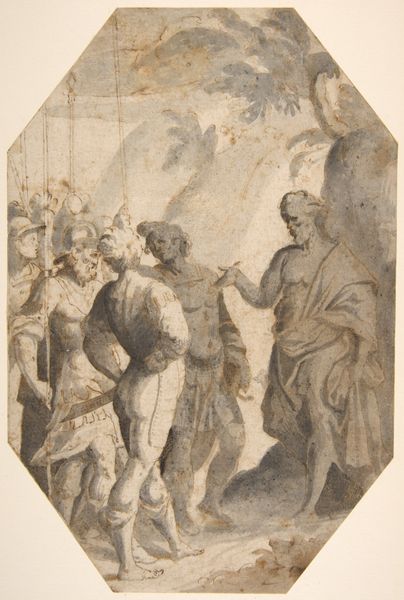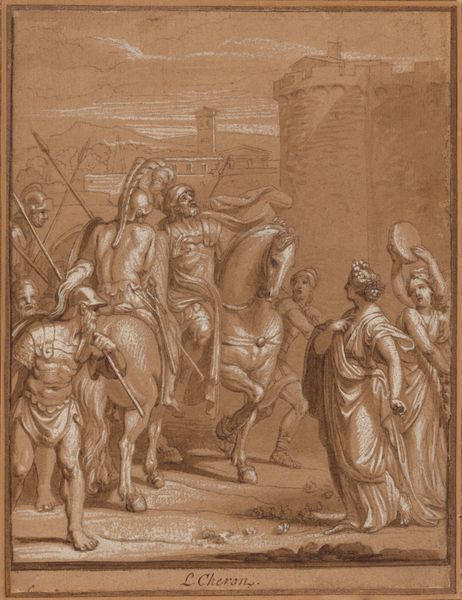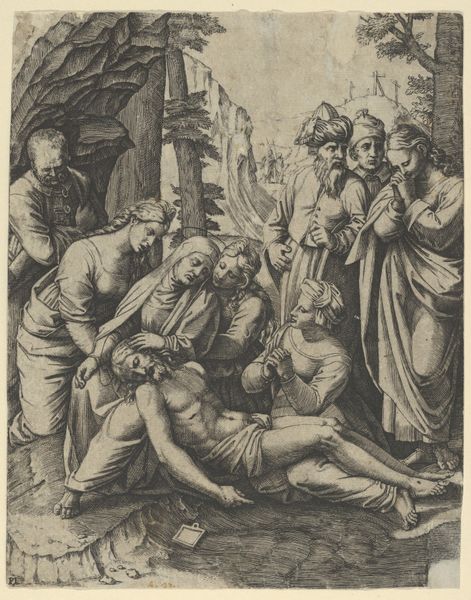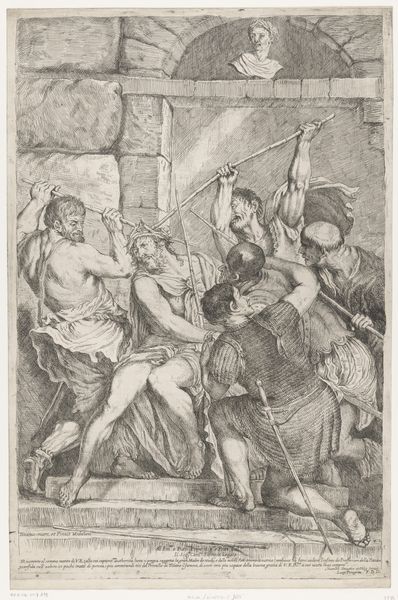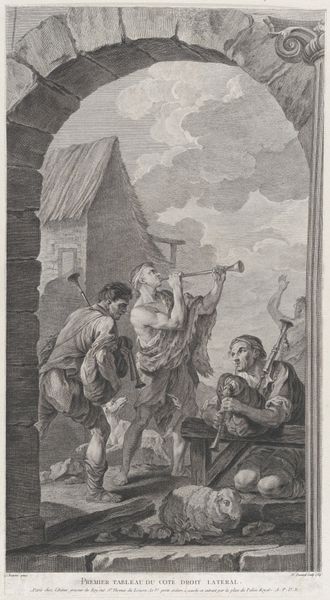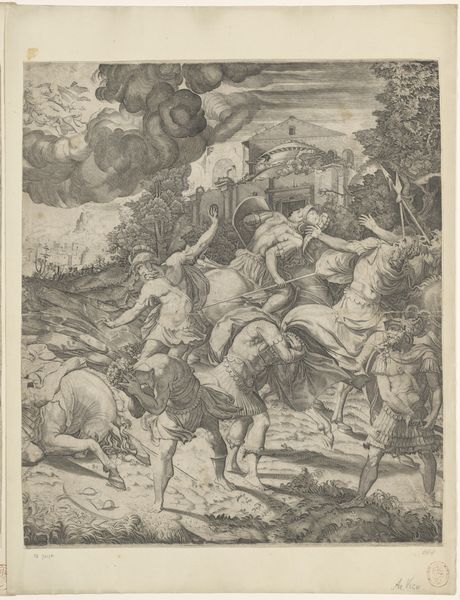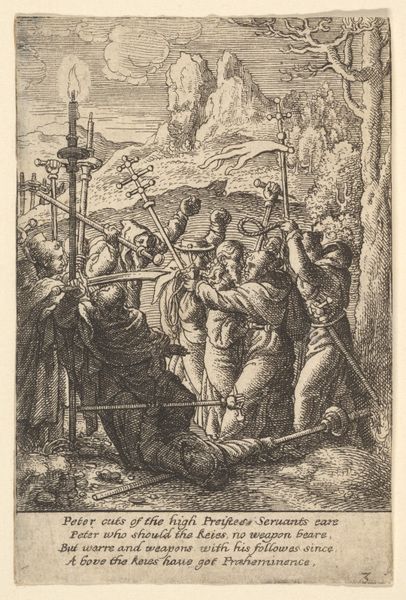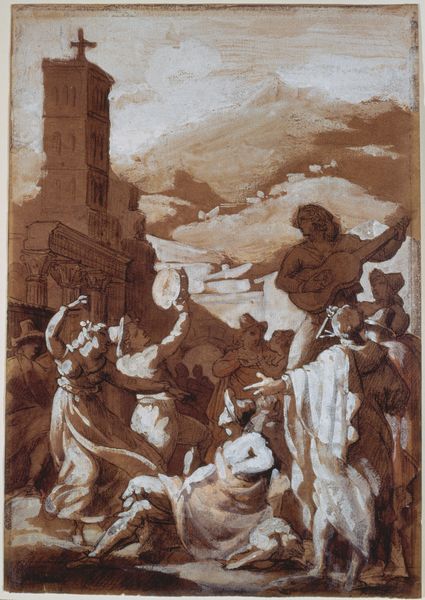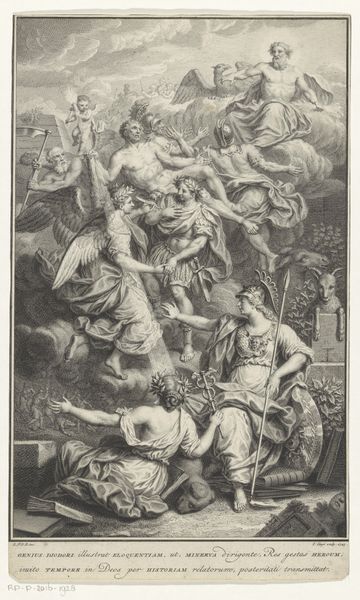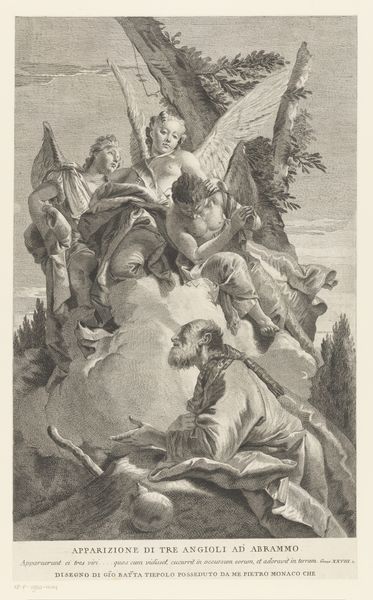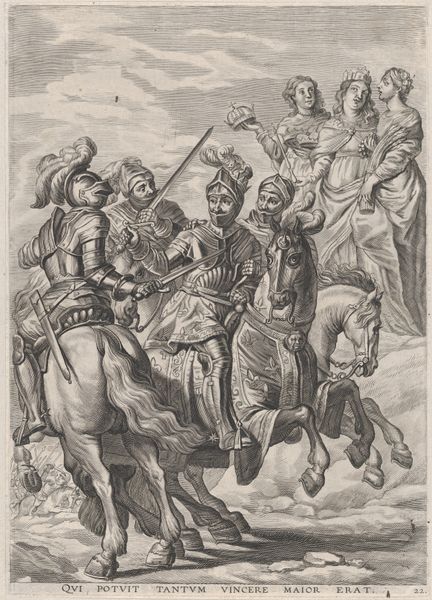
The Chapel of the Enfants-Trouvés in Paris: La Suite des rois mages: cavaliers 1756
0:00
0:00
drawing, print, engraving
#
drawing
#
baroque
# print
#
horse
#
men
#
history-painting
#
engraving
Dimensions: Sheet (Trimmed): 20 5/8 × 11 5/16 in. (52.4 × 28.8 cm)
Copyright: Public Domain
Curator: This etching by Étienne Fessard, dating back to 1756, depicts "The Chapel of the Enfants-Trouvés in Paris: La Suite des rois mages: cavaliers". It's quite a marvel. Editor: My initial reaction? It has a distinct Baroque sensibility, doesn't it? Look at the dynamism inherent in the composition—the diagonals, the swelling figures... and such striking tonal contrast. Curator: Absolutely Baroque. These tonal contrasts speak volumes. Consider, for instance, the figures in the foreground attending to ornate vessels – these represent gifts for the Christ child, objects loaded with symbolic and material significance. It also presents the idea of "gift" with an exchange of culture. Editor: Indeed, the play of light across the textures contributes to the overall theatricality. Tell me more about how the figures inhabit this architectural space? The rough stones against their bodies... Curator: Fessard uses an arched stone doorway, slightly crumbling, that frames the procession, visually connecting the past with, perhaps, a hope for the future of found children. It also evokes a sense of entering a sacred, perhaps a temporal, space. Notice the Magi themselves, bearing standards that signal cultural exchange and aspiration, echoing throughout history. Editor: I agree. The procession recedes, stage-like, into the distance, culminating in... a kind of ethereal background. What a remarkable example of engraving, allowing for that impressive range of light and shadow. The figures at the forefront look sturdy, heavy with gravity. Curator: And those horses, powerful steeds. Consider the horse throughout art history and its various interpretations: power, nobility, the movement of civilization. It's all here. It serves not just as transport but as a symbol in itself. Editor: Right! The horse always represents motion, but these also reflect how wealth carries power into different locations of the world. One could write volumes on the cultural signifiers. Curator: Ultimately, this work blends material culture with something profoundly moving. Editor: Yes, the whole construction transcends its time through its formal achievements. I'm utterly transfixed.
Comments
No comments
Be the first to comment and join the conversation on the ultimate creative platform.
